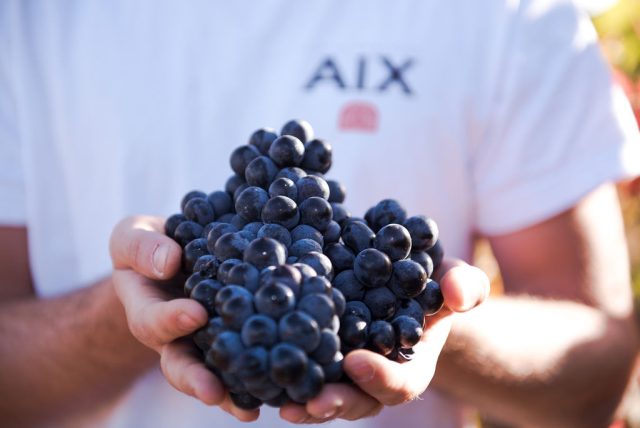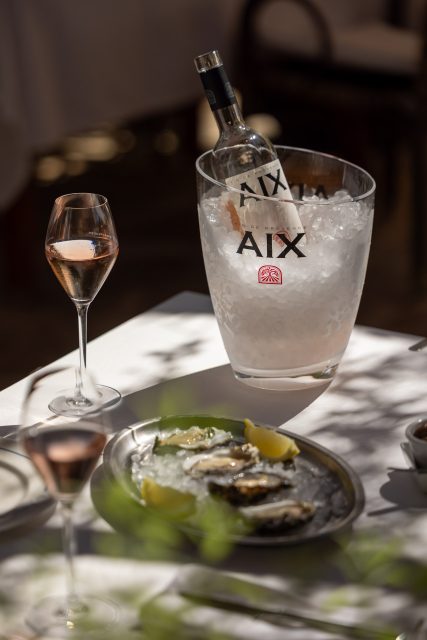This website uses cookies so that we can provide you with the best user experience possible. Cookie information is stored in your browser and performs functions such as recognising you when you return to our website and helping our team to understand which sections of the website you find most interesting and useful.
Maison Saint Aix unveils the secret to its AIX Rosé 2023
Famed Provence producer Maison Saint Aix has revealed its 2023 AIX Rosé, a vintage that winemaker Nicolas Quiles describes as the result of a “dynamic journey”.

“Beginning with a frosty January involving valiant pruning, the vines awakened to a frost-free bud burst in April,” Quiles explains. “May delivered warmer temperatures, complete with abundant morning sunshine and afternoon rain. Fortunately, Maison Saint Aix was spared from the ravages of hail. Despite intermittent rainfall, June ushered in a successful flowering process and the promise of a bountiful harvest to come. As record-breaking temperatures soared in July and August, preparations persisted in anticipation of the AIX Rosé 2023 harvest.”
Harvesting itself commenced on 6 September at Domaine de la Grande Séouve. Picking of the 75 hectare estate concluded on 28 September.
“Our annual harvest always takes place in the early morning hours before dawn, ensuring optimal freshness of the grapes while preserving their most delicate aromas and reducing the risk of oxidation. This meticulous approach is integral to achieving AIX’s distinctive colour, delicate aromas, gentle acidity and signature length.”
“We were fortunate to experience sunny yet cooler weather during the harvest,” he adds, “which was a welcome relief after a scorching summer season. Temperature fluctuations between night and day created ideal conditions, greatly enhancing the quality of the grapes.”
Crafting excellence
Maison Saint Aix’s work to create a fresh, vibrant rosé doesn’t stop in the vineyard.
“For a long time, rosé was considered a by-product of red wine, but at Maison Saint Aix, we’ve always been dedicated to premium rosé from the start. Our cellar is specifically designed for rosé production. We have state-of-the-art equipment, including temperature-controlled stainless steel tanks and pneumatic presses, which are necessary to produce the quality of rosé that only Provence can offer,” Quiles shares.
“Rosé, being a delicate wine, undergoes meticulous processes in the cellar, perhaps even more so than white or red wine. Temperature control is key in our cellar, ensuring the juice is kept at the optimal temperature from pressing to settling, fermentation, and bottling. This meticulous control minimises oxidation and preserves the fresh fruit flavours.”
Quiles describes his exact methods as the “chef’s secret”, but suggests that “the right harvest moment” and “careful handling” in the cellar are key.

One winemaking decision that is not kept under wraps is the blend, consisting of three classic Provence varieties: Grenache, Syrah and Cinsault.
“Grenache, making up 60% of the blend, plays a crucial role in the wine’s structural integrity,” says Quiles. “If Grenache grapes have excessive sugar levels, leading to heightened alcohol content, their portion in the blend is adjusted accordingly. Syrah and Cinsault, constituting 20% each, contribute to the wine’s complexity, fruitiness, and overall balance, complementing Grenache’s role.”
The perfect pairing

While rosé may be great to drink on its own while sat on a sunny terrace somewhere, AIX Rosé 2023 is a wine with plenty of gastronomic potential, particularly with seasonal spring dishes.
“Some excellent options include oysters, salmon, lobster, light salads, and refined tapas. From fresh seafood to Provençal salads and more robust charcuterie, AIX Rosé is versatile at the table, making it an ideal choice for spring dining and long lunches.”
“AIX’s focus on the concept of ‘sharing’ aligns perfectly with the trend of restaurants emphasising shared dining experiences. This shared dining approach encourages diners to explore a variety of flavours and textures, making AIX Rosé an ideal companion for convivial gatherings and memorable meals during the spring season,” he adds.
Asked to pick a slightly more unusual pairing for this pink drink, Quiles points to “spicy Asian cuisine”: “AIX Rosé’s ability to complement and balance flavours, particularly with a touch of chili and Asian spice, makes it an ideal accompaniment to the bold and vibrant flavours of various Asian dishes. Its refreshing acidity and delicate fruitiness can help cool and soothe the palate, while also enhancing the complexity of the spices.”
The suggested serving temperature is between 8°C and 12°C.
A drink for all seasons
Rosé is thought by a lot of consumers as the perfect drink for spring and summer – indeed, it’s easy-drinking nature makes it a popular aperitif option, but, as previously mentioned, its ability to pair with food makes it a wine for the whole year.
“Rosé is meant to be enjoyed and cherished throughout the year, a ‘joie de vivre in bottled form’. Its versatility extends beyond traditional settings. Whether enjoyed as an after-work drink at a trendy wine bar, accompanying a meal at a chic restaurant, or sipped on the slopes while skiing, rosé adapts well to different environments.”
Indeed, while the festive season may be many months off yet, Quiles reveals that AIX Rosé is a popular choice for celebratory bottles: “Towards the end of the year, we observe an increase in sales of magnum and double magnum bottles.”
To discover more about Maison Saint Aix, click here.

